
D Left to right: Shinjuku is a major transportation hub in Tokyo, with the busiest train station in the world; chopsticks are used for cooking and serving food as well as for eating.
初めての出会い
First encounters
Feel the rhythm of daily life
Arriving in Japan for the first time is a thrilling experience. It’s surprisingly easy to get into the rhythm of daily life here; the food, the language, and the etiquette that guides every interaction are all part of the excitement of discovering Japan.
Let us guide you through your first experiences in Japan; as you negotiate public transportation, understand the importance of good manners, meet local people, and uncover the meaning behind the symbols you’ll see all around you, your grasp on the culture will become stronger with each day and new encounter.
Getting Around
Japan has the most amazingly efficient public transportation system (and as a result car ownership is about half that of the US). So you should find travelling to almost any point in the country by train or by coach fast, stress-free, and comfortable. However, for the two-thirds of all commuters who rely on the train and subway systems to get to work, things are a little different. In Tokyo, 20 million train passengers pass through the network every day. This leads to an incredibly busy commuter rush hour— an experience to be braved or avoided, depending on your point of view. What gets everyone through the daily crush is good train manners; the key rules are to avoid loud conversations and to hold your backpack or luggage in front of you to make space for others.
Public transportation signs are usually written both in English and Japanese, so it’s easy to get around. However, if you’re in a small town in the countryside, finding your destination can be a whole new challenge. Not all streets have names, and the buildings within a block may be numbered in the order that they were built—intriguing but confusing. If in doubt, ask a polceman; in the city of Kyoto, as much as 90 percent of police time is spent giving directions.
Etiquette
Japan has a reputation for restraint, but anyone who has heard the piercing yell of “Irasshaimase!” (“Welcome!”) when entering a shop or restaurant knows that the culture isn’t always quite as reserved as it seems. Still, there are some unspoken rules you should know to help you feel at ease. No one expects foreigners to get everything right but engaging with the rules—which are all about valuing harmony (wa)—will generate goodwill.
Bowing: When meeting someone for the first time, it is polite to bow as a sign of respect. You can also bow when thanking someone or saying goodbye.
Shoes: Anywhere there are tatami mats—and always in a person’s home—you will be required to take off your shoes. It’s a good idea to wear clean, matching socks.
Bathrooms: When you enter a bathroom in a house or ryokan (traditional inn), there will often be a pair of slippers at the door; leave your own footwear outside and switch to the these. If you bathe, whether it’s at a public bath or a hot spring, it is important to shower in the wet room on the stool provided before getting into the bath, which is exclusively for relaxing.
Chopsticks: Never point your chopsticks at another person, wave them in the air, or use them to spear food. And you should never leave your chopsticks sticking into a bowl of rice, as this is reminiscent of funeral rituals.
Money: In Japan, money is rarely passed directly from hand to hand, so when paying for an item or service, place your money on the small tray provided. Tipping is not part of the culture and if you leave money for a server they’ll always return it.
Shopping: If you use the changing rooms at a store, you may be offered a bag; wear this over your face to prevent your makeup from staining the new clothes.
Interactions
If you have time to pick up a few useful Japanese phrases before your trip, that’s great, but if not, you’ll still get by just fine. You don’t have to speak the language to communicate: respectful behavior and good manners will go a long way.
You’ll probably find that striking up a conversation comes easily and naturally. Most Japanese people you meet will be thrilled that you are interested in their country and in getting to know them. Although they may not be confident speaking English at first, many Japanese people will have studied it at school and will love the chance to practice.
Even in a casual setting like a sporting event or an izakaya (Japanese tavern), people will often present you with their business card, which is standard etiquette when being introduced. Accept the card using both hands and present your own if you have it on you. It’s important to make sure you treat their card with respect and do not jam it in your pocket, but instead slip it carefully into your wallet.
Symbolism
Colors are loaded with meaning in Japan. This dates back to the country’s early history when they used to denote rank in society. Animals also carry fascinating symbolic significance derived from folklore and myth. Keep your eye out for these common motifs.
Colors
Akane This is a special shade of red used for shrines. It is said to grant protection from evil and disaster, and to increase the power of the spirits.
White White is regarded as godly and pure, so sacred places are often strung with white, lightning-shaped paper (shide), marking the boundary between the earthly and the spiritual worlds.
Black Exuding dignity and formality, black is used for the robes of Buddhist monks.
Purple In ancient times, purple dye was difficult to produce, so the color is traditionally associated with high status. In no theater, for example, you can recognize emperors and gods by their purple and white costumes.
Blue In the language of early Japan, there was no distinction between blue and green. It is the legacy of this oddity that the word for blue (ao) is still used to describe green traffic lights and leaves.

D Left to right: Torii gates at Shinto shrines are painted akane red; white paper shide streamers are used in Shinto rituals; unlike the vibrant colors of China and India, the robes of Buddhist monks in Japan are an austere black, or muted tones like brown and gray.
Animals
Koi With their ability to swim upstream and resist the flow of water, carp are a symbol of perseverance. The colorful koi carp varieties also symbolize faithfulness and marriage.
Cranes In Japanese folklore it is believed that cranes live for 1,000 years, so these birds represent good fortune and longevity. The crane is also closely associated with wedding and New Year celebrations.
Fox Foxes are said to be messengers of the Shinto spirit Inari, so you’ll often find statues of them at shrines. Old folklore also describes them as tricksters who can transform into humans; there is a theory that the common greeting “moshi moshi” is used when picking up the phone because it’s a tongue twister for foxes and proves you’re a real human.
Tanuki A subspecies of the Asian Raccoon Dog, tanuki are seen as masters of disguise and cunning shape-shifters. Tanuki sculptures with comically inflated scrotums are, rather surprisingly, a common sight and represent good luck.
Cats The maneki-neko (beckoning cat) is thought to bring luck, happiness, wealth, and prosperity. These colorful felines, with their smiley faces and raised paw, will often greet you at the entrance to shops and restaurants.

D Left to right: Tanuki statues carry sake as a symbol of virtue; lucky cats were introduced in the Edo period.
THE ESSENCE OF JAPAN
Whether planning your first trip or needing ideas for yet another visit, here are some essential highlights you won’t want to miss. Blending cultural experiences with breath- taking views up and down the archipelago, these moments will draw you deeper into the heart and soul of Japanese life.
Be More Japan FIRST ENCOUNTERS
1. Cross the threshold into the world of the gods at a Shinto shrine. You’ll find some are peaceful and intimate, while others are lively destinations resounding with ringing bells and the chatter of people discussing the love fortunes they’ve bought at the shrine stalls.

Be More Japan FIRST ENCOUNTERS
2. Picnic under the cherry blossom trees in spring—a truly Japanese celebration of nature and the changing seasons. You can even chase the blossoms as they burst into life in stages across Japan from March in the south to early May up north.
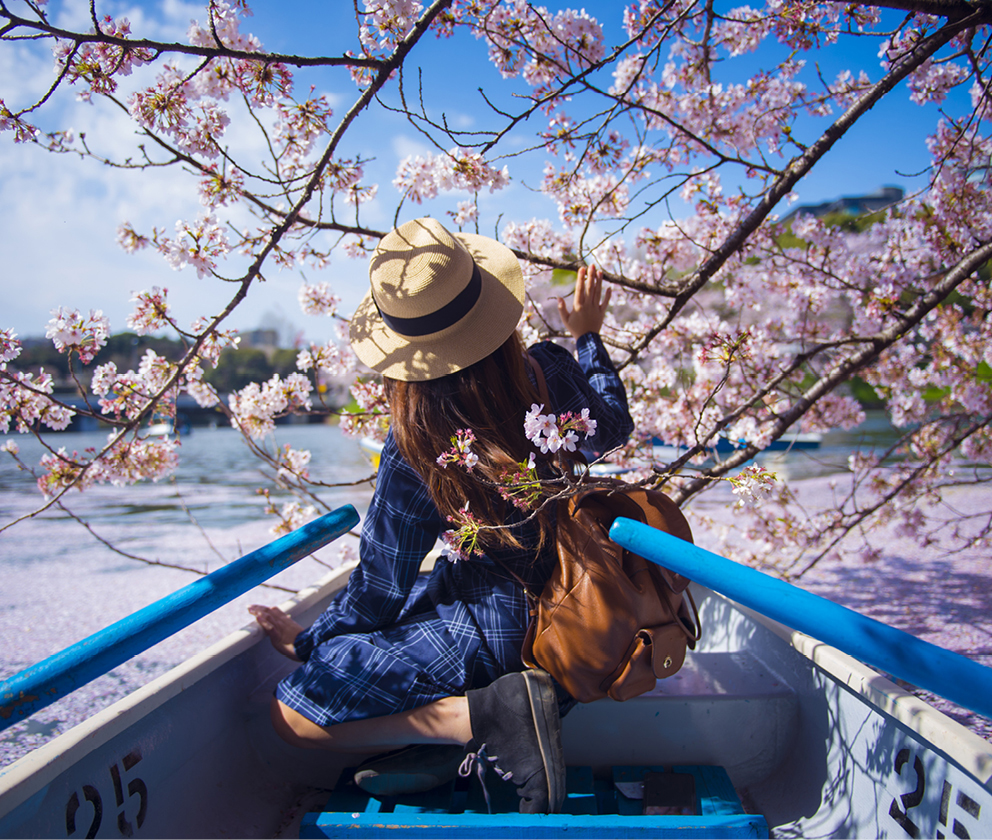
Be More Japan FIRST ENCOUNTERS
3. No talent required: sing your heart out at karaoke. You can order food and drink right in your private, soundproof room, so settle in for the evening and get ready to belt out your favorite songs in the ultimate sing-along.
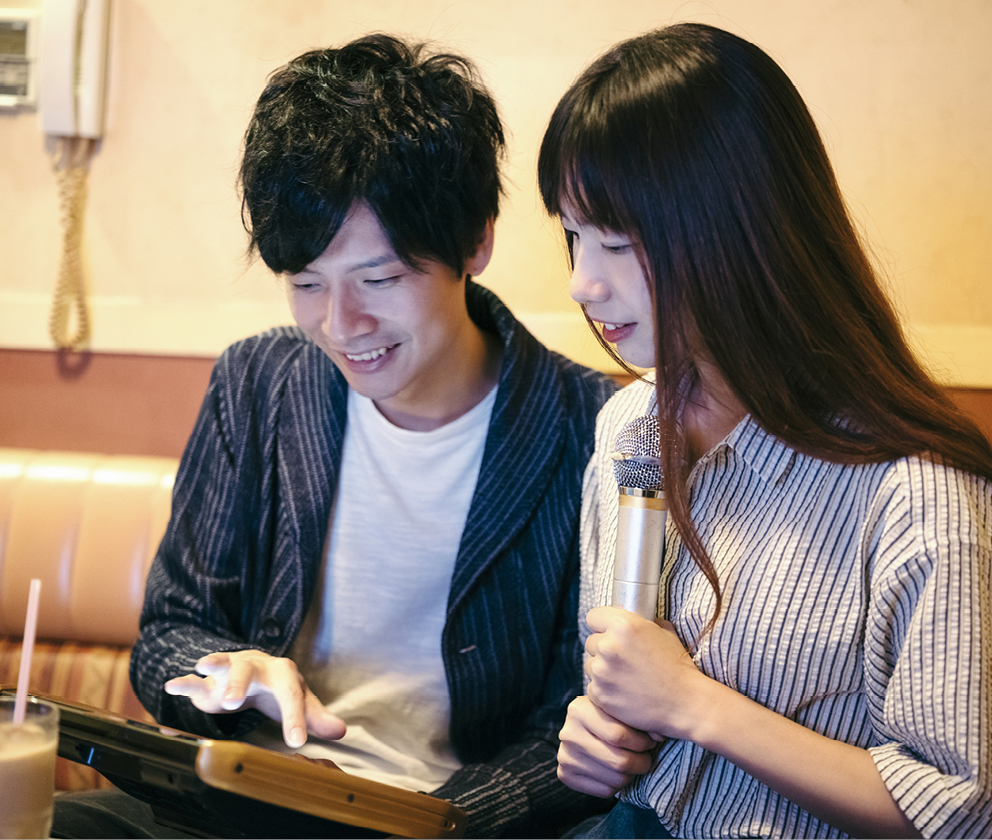
Be More Japan FIRST ENCOUNTERS
4. Experience a tranquil tea ceremony and fall under the spell of this traditional, elegant ritual. The ceremony is full of Zen-inspired moments of peace and meditation and beauty in the form of the ceramic bowls and wall art.

Be More Japan FIRST ENCOUNTERS
5. Visit Kyoto, a historic icon in the heart of modern Japan. The city is home to an amazing array of incredible architecture, with more UNESCO-listed World Heritage Sites than any other city on the planet. The best way to experience Kyoto is to stay in a ryokan (traditional inn), where you’ll sleep on a futon on tatami mats and dine on classic Japanese food washed down with plenty of sake.
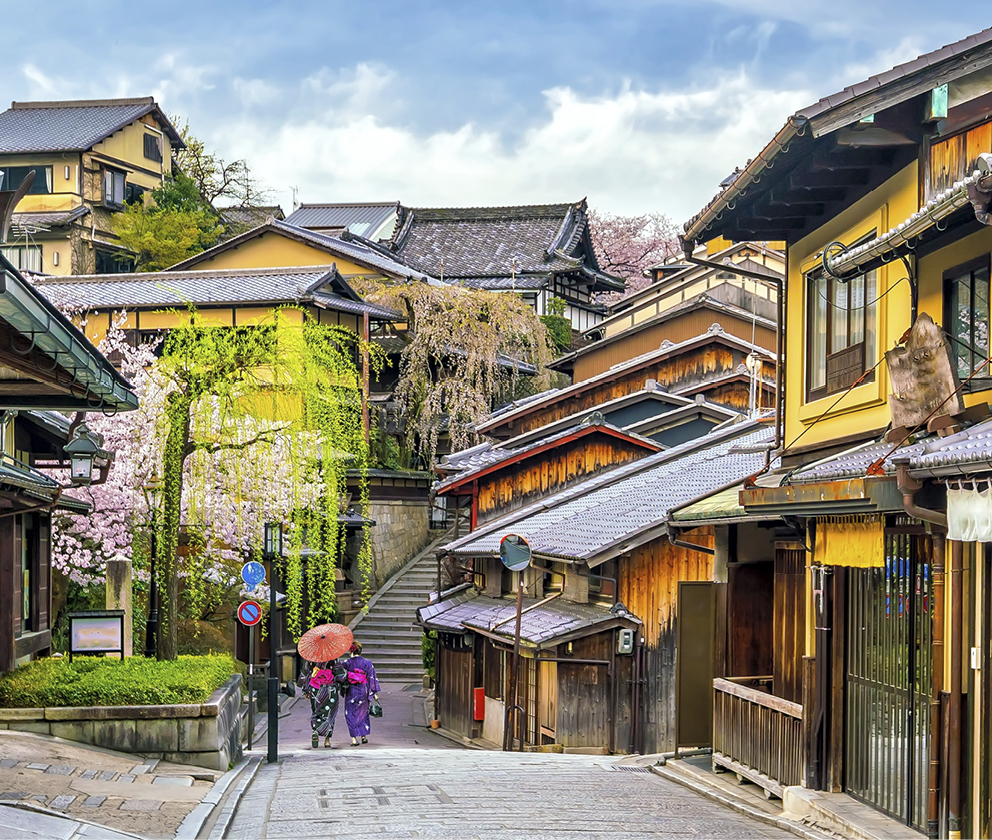
Be More Japan FIRST ENCOUNTERS
6. Express yourself through style in the fashion districts of the big cities. Get inspired on Sundays when the streets become a catwalk of stylish shoppers—either showing off the latest chic trends or continuing the Japanese tradition of colorful experimentation.
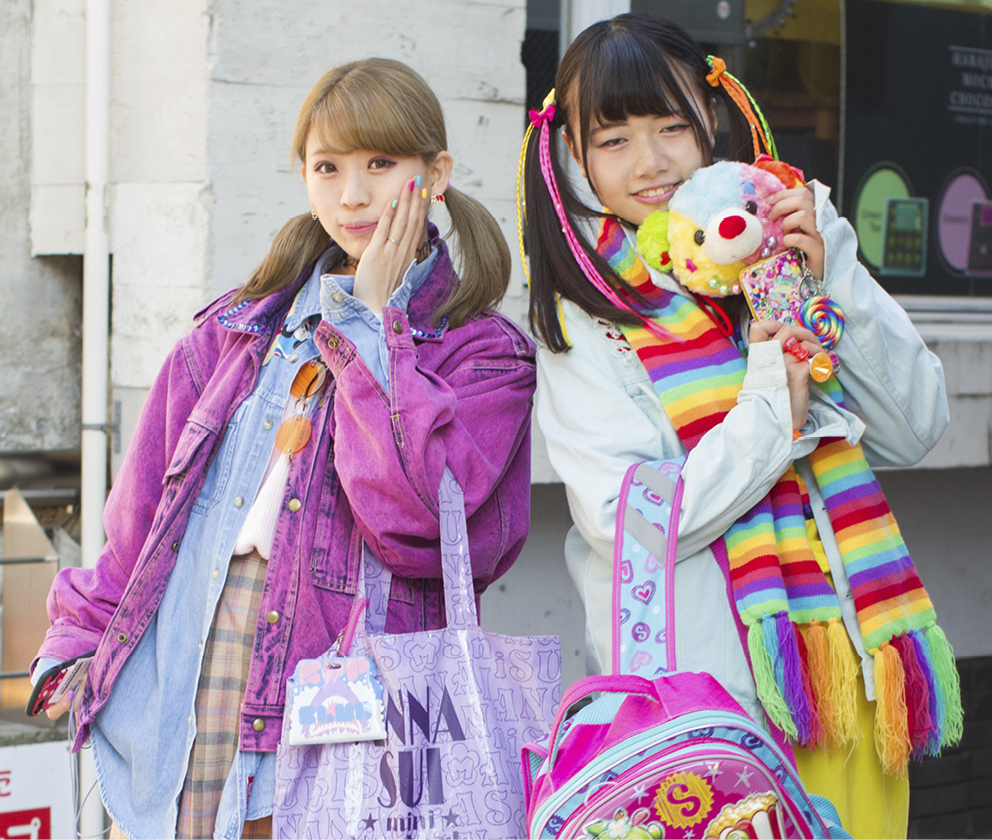
Be More Japan FIRST ENCOUNTERS
7. Find your inner peace in a Zen garden. Sparse and barren at first glance, look closer to seek the meaning behind each choice of rock and stone, as understanding the scene before you is the key to unlocking true tranquility.
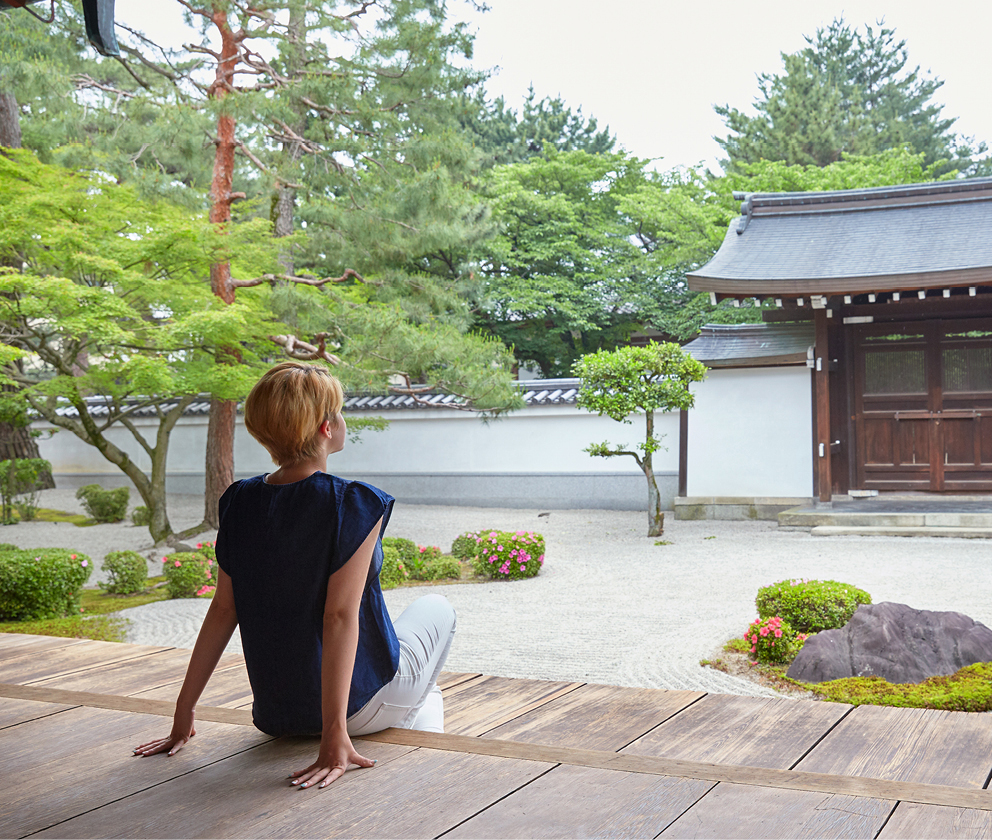
Be More Japan FIRST ENCOUNTERS
8. Join the riotous celebrations at a summer festival. Although each festival is different—some honoring a particular shrine or historic event—you’ll find they’re all full of exuberant crowds enjoying delicious street food, lively entertainment, and quality time with friends and family.

Be More Japan FIRST ENCOUNTERS
9. Create a living sculpture in an ikebana class. Everything from the choice of vase to the spaces between the twigs and flowers becomes an artistic tool to design a piece that captures the fleeting beauty of nature.
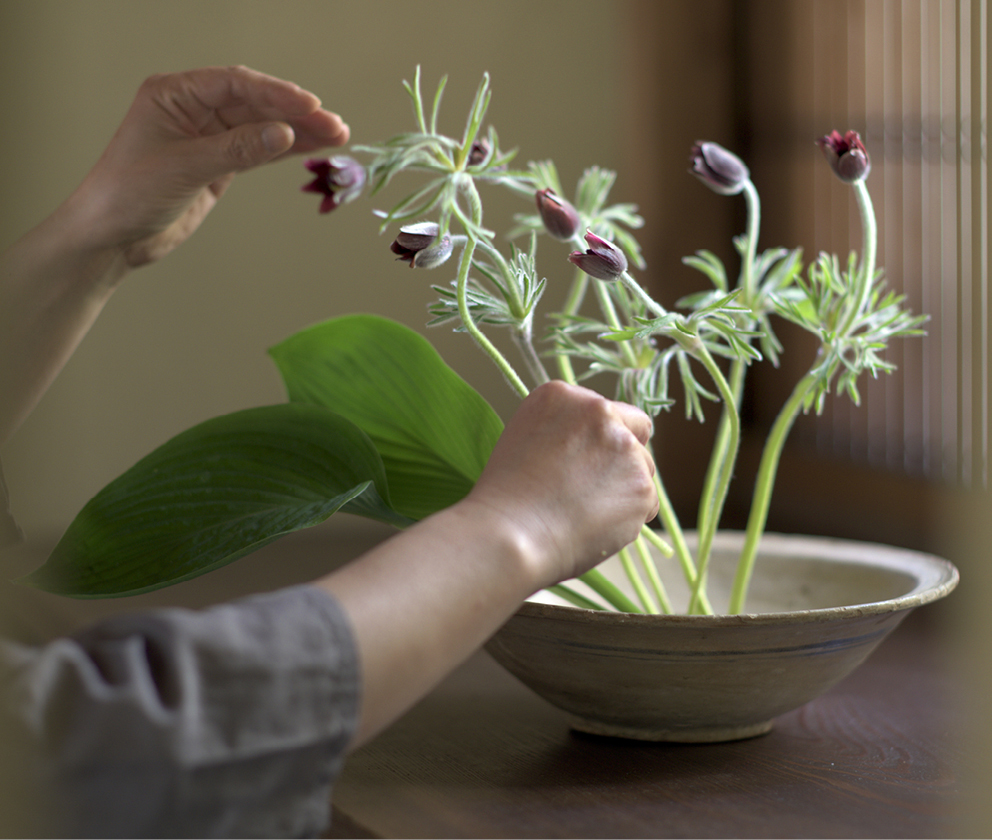
Be More Japan FIRST ENCOUNTERS
10. Check out a vending machine classic: canned coffee, an everyday staple all across Japan. Ditch the ordinary cafés and stop at the nearest vending machine—you’ll never be far from one of these ubiquitous devices—to enjoy a refreshingly cold coffee in the heat of summer or a deliciously hot can in winter.

Be More Japan FIRST ENCOUNTERS
11. Take a dip in a relaxing hot spring. As one of the most active volcanic regions in the world, is it any wonder that hot springs are such an integral part of Japan’s culture? Find out why they’re so important to the Japanese by soaking in a rotenburo— an outdoor hot spring—to enjoy not just a unique cultural experience but also the stunning natural views.

Be More Japan FIRST ENCOUNTERS
12. Savor Japan’s award-winning whisky in a refreshing highball, which pairs perfectly with either meat or seafood. With the help of its seasonal climates and the native wood used for casking, Japanese whisky now takes center stage across the world.

